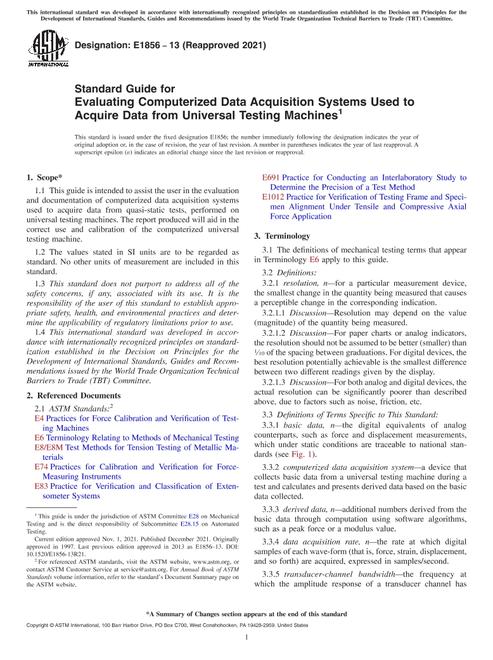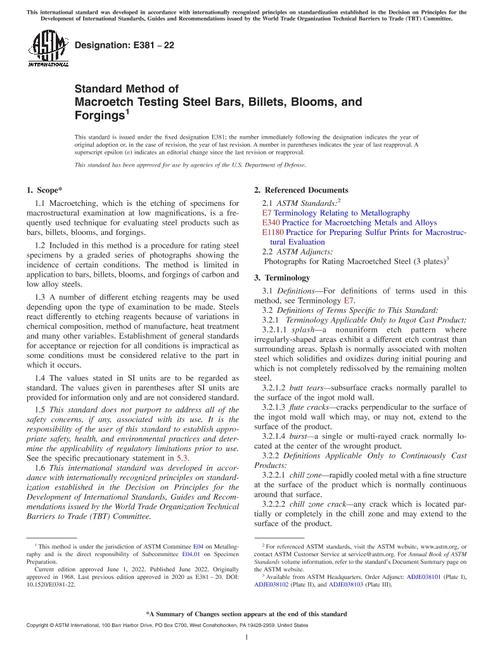-
-
Available Formats
- Availability
- Priced From ( in USD )
-
Available Formats
-
- Immediate download
- $69.00
- Add to Cart
-
- Printed Edition
- Ships in 1-2 business days
- $69.00
- Add to Cart
Customers Who Bought This Also Bought
-

ASTM E1856-13(2021)
Priced From $54.00 -

ASTM E45-18a(2023)
Priced From $69.00 -

ASTM E381-22
Priced From $54.00 -

ASTM E399-23
Priced From $82.00
About This Item
Full Description
1.1 This test method covers a procedure for experimentally determining macroscopic residual stress tensor components of quasi-isotropic bearing steel materials by X-ray diffraction (XRD).
1.2 This test method provides a guide for experimentally determining stress values, which play a significant role in bearing life.
1.3 Examples of how tensor values are used are:
1.3.1 Detection of grinding type and abusive grinding;
1.3.2 Determination of tool wear in turning operations;
1.3.3 Monitoring of carburizing and nitriding residual stress effects;
1.3.4 Monitoring effects of surface treatments such as sand blasting, shot peening, and honing;
1.3.5 Tracking of component life and rolling contact fatigue effects;
1.3.6 Failure analysis;
1.3.7 Relaxation of residual stress; and
1.3.8 Other residual-stress-related issues that potentially affect bearings.
1.4 Units - The values stated in SI units are to be regarded as standard. No other units of measurement are included in this standard.
1.5 This standard does not purport to address all of the safety concerns, if any, associated with its use. It is the responsibility of the user of this standard to establish appropriate safety and health practices and determine the applicability of regulatory limitations prior to use.





